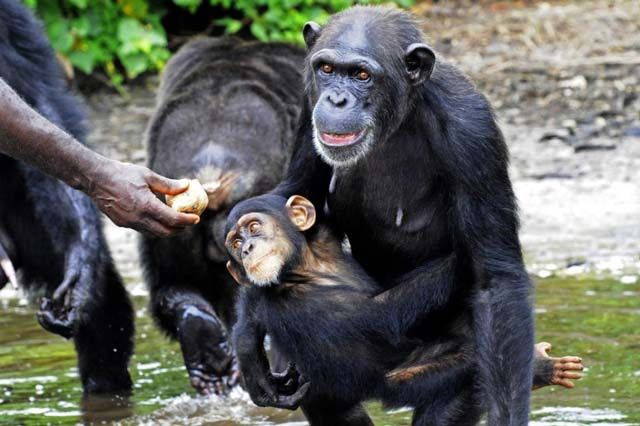Disproving Darwin? Human hand more primitive than chimp's, says study
Human hands are likely more similar to those of the last common ancestor humans & chimps shared millions of years ago

On Tuesday, scientists in the United States and Spain said the human hand may be more primitive than that of our closest living cousin, the chimpanzee. PHOTO: AFP
On Tuesday, scientists in the United States and Spain said the human hand may be more primitive than that of our closest living cousin, the chimpanzee.
In fact, human hands are likely more similar to those of the last common ancestor we and chimps shared millions of years ago.
"These findings indicate that the structure of the modern human hand is largely primitive in nature, rather than the result of selective pressures in the context of stone tool-making," said a press summary from the journal Nature Communications, which published the study.
In fact, it is the hands of chimps and orangutans that changed most since they split off to form new branches of the hominid family tree -- developing longer fingers, compared to the thumb, for swinging on tree branches.
The human hand has a longer thumb relative to the other fingers than that of chimps and other apes -- allowing for what scientists call "pad-to-pad" precision grasping, which simply means that our fingertips are able to touch.
There is a widely held assumption among palaeontologists that the last common ancestor (LCA) of humans and apes, an individual whose identity remains uncertain, was a prototype chimp with chimp-like hands.
But a team led by Sergio Almecija of The George Washington University's Center for the Advanced Study of Human Paleobiology, is challenging that.
They analysed the hand-length proportions of humans, as well as living and fossil apes to draw a picture of the evolutionary history, and found the human "thumb-to-digits ratio required little change since the LCA."
"The inevitable implication is that when hominins (the extended human family excluding apes) started producing flaked stone tools in a systematic fashion, probably as early as 3.3 million years ago, their hands were -- in terms of overall proportions -- pretty much like ours today," Almecija told AFP by email.
"Another important take-home message is that if human hands are largely primitive, the 'relevant' changes promoting the emergence of widespread reliance on stone tool culture were probably neurological" and not manual -- meaning it was our brains that allowed for adaptation.
"Any evolutionary model of human hand evolution assuming a chimpanzee-like ancestor will likely be flawed from the beginning," he added.



















COMMENTS
Comments are moderated and generally will be posted if they are on-topic and not abusive.
For more information, please see our Comments FAQ